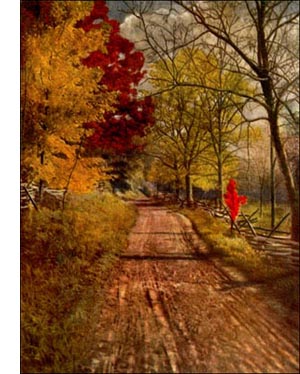Rock Elm or Cork Elm Tree
 The Rock or Cork Elm (Ulmus Thomasi, Sarg.) has shaggy stout limbs like a bur oak's, and a rugged, stiff expression quite unusual in an elm. A look at the foliage is reassuring, for elm leaves vary but slightly in the different species. In spring the type of inflorescence is the best botanical character to depend upon.
The Rock or Cork Elm (Ulmus Thomasi, Sarg.) has shaggy stout limbs like a bur oak's, and a rugged, stiff expression quite unusual in an elm. A look at the foliage is reassuring, for elm leaves vary but slightly in the different species. In spring the type of inflorescence is the best botanical character to depend upon.The cork elm was discovered in the woods of western New York by David Thomas, who noted its corky bark and habit of hearing its flowers and fruit in racemes. He named the species litmus racemosa, as was most reasonable. It was discovered later that this name had previously been applied to a European corky elm; whereupon the name of its discoverer was substituted.
"Rock elm" and "hickory elm" refer to the hardness of its wood. It has in greater degree the good qualities of white elm lumber, and is counted the best of all elms by the wheelwright. Compact, with interlacing fibres, there is spring, strength and toughness in this wood which adapts it for bridge timbers, heavy agricultural implements, wheel stocks, sills, railroad ties and axe handles.
The best trees, 60 to 90 feet high, with trunks 2 to 3 feet through, grow in dry soil in lower Ontario and Michigan. The species occurs also in scattered localities west to Nebraska and Tennessee, and east as far as Vermont.